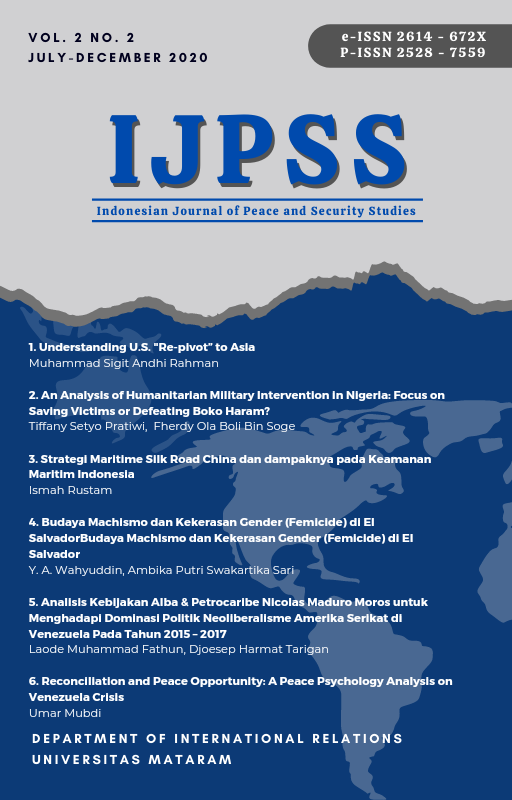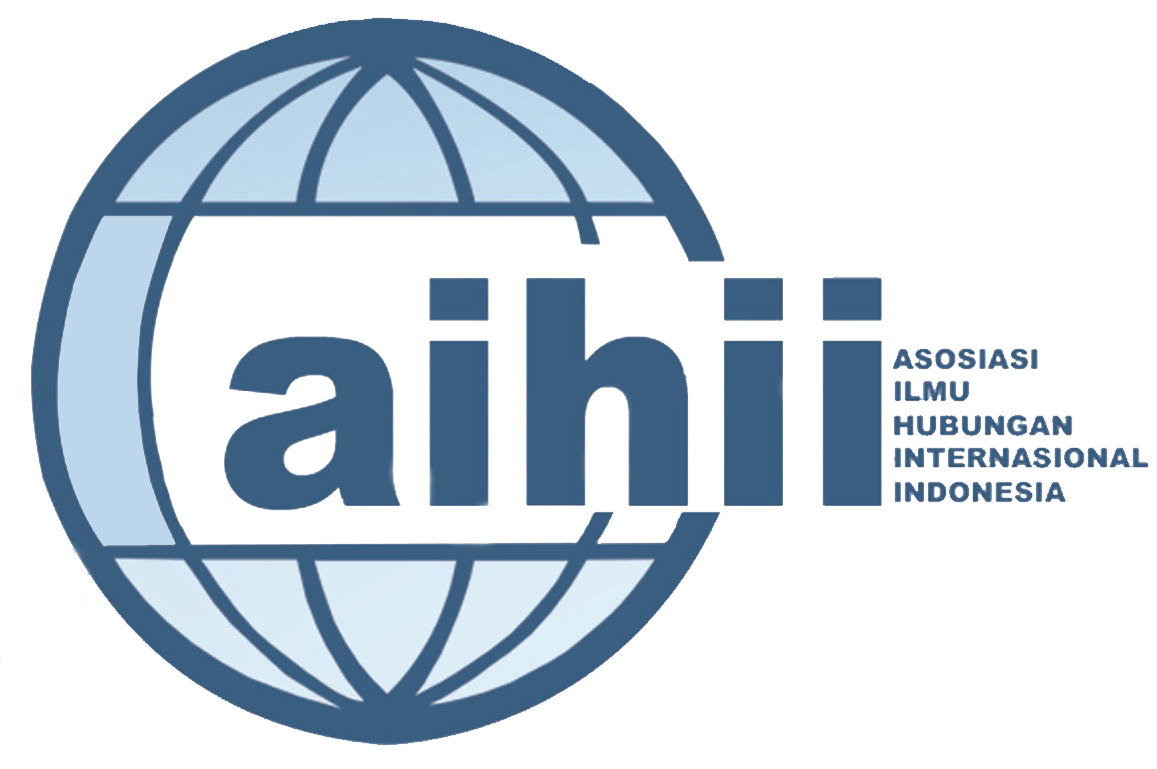Understanding US “Re-pivot” to Asia
DOI:
https://doi.org/10.29303/ijpss.v2i2.47Keywords:
Re-pivot policy, US foreign policy, post-pandemic world order, US-Indonesia relations.Abstract
This paper explains the nature and the context of the future of US foreign policy to the Asia or so-called US re-pivot policy to Asia. By using the historical method, this paper tries to make sense of US continuous engagement in Asia, past and present; with a hope to illuminate even quite distant futures of US foreign policy direction. The 2020 US presidential candidates, Donald Trump and Joe Biden have signaled their strong intention of US re-pivot to Asia. However, the new re-pivot to Asia should be different from Obama’s ‘pivot to Asia’. Re-pivot should bring practical economic, strategic, and political benefits to Asian countries, rather than simply containing China.
References
———. (2012). The Making of Southeast Asia: International Relations of a Region. Singapore: Institute of Southeast Asian Studies.
Aspinall, E and Marcus Mietzner, and Dirk Tomsa. (2105) "5. Yudhoyonos Foreign Policy: Is Indonesia a Rising Power?". 73: Institute of Southeast Asian Studies.
Blinken and Kagan. (2019). “America First’ is only making the world worse. Here’s a better approach.” Brooking Institute. https://www.brookings.edu/blog/order-from-chaos/2019/01/04/america-first-is-only-making-the-world-worse-heres-a-better-approach/
Connelly, A. (2015). "Sovereignty and the Sea: President Joko Widodo's Foreign Policy Challenges." Contemporary Southeast Asia: A Journal of International & Strategic Affairs 37, no. 1 (2015): 1-28.
Dunst, C. (2020). “Biden “Re-pivot” to Asia Cannot Be Obama 2.0. ISEAS. https://www.iseas.edu.sg/media/commentaries/biden-re-pivot-to-asia-cannot-be-obama-2-0/
Fukuyama, F. (1992). The end of history and the last man. New York: Free Press.
Gaddis, J. (1992). International Relations Theory and the End of the Cold War. International Security, 17(3), 5-58. DOI:10.2307/2539129.
----------. (2002). The landscape of history: How historians map the past. Oxford: Oxford University Press.
----------. (2005). Strategies of Containment: A Critical Appraisal of American National Security Policy During the Cold War. New York: Oxford University Press.
Goldberg 2016 https://www.theatlantic.com/magazine/archive/2016/04/the-obama-doctrine/471525/
Jacques, M. (2012). When China Rules the World: The End of the Western World and the Birth of a New Order. London, UK: Penguin Books, Ltd.
Joffe, J. (2014) The Myth of America's Decline: Politics, Economics, and a Half Century of False Prophecy. New York, NY: W.W. Norton & Company.
Kahin, Audrey R., and George McT. Kahin. (1997). Subversion as Foreign Policy: The Secret Eisenhower and Dulles Debacle in Indonesia. University of Washington Press.
Kaplan, Robert D. (2015). Asia's Cauldron: The South China Sea and the End of a Stable Pacific. New York: Random House.
Kupchan, C. (2012). No one's world: The West, the rising rest, and the coming global turn. New York: Oxford University Press.
Laksmana, Evan A. (2011)."Indonesia's Rising Regional and Global Profile: Does Size Really Matter?". Contemporary Southeast Asia: A Journal of International & Strategic Affairs 33, no. 2 (2011): 157-82.
Mandelbaum, M. (2014). The Road to Global Prosperity. New York, NY: Simon & Schuster.
McMahon, Robert J. (1999). The Limits of Empire: The United States and Southeast Asia since World War II. New York: Columbia University Press.
Novotny, Daniel. (2010). Torn between America and China: Elite Perceptions and Indonesian Foreign Policy. Singapore: Institute of Southeast Asian Studies.
Parameswaran, Prashanth. (2014). "Between Aspiration and Reality: Indonesian Foreign Policy after the 2014 Elections." Washington Quarterly 37, no. 3 (Summer 2014): 153.
Rose, G. (2019, March). The New Nationalism. Foreign Affairs, 98(2). Retrieved from https://www.foreignaffairs.com/articles/2019-02-12/new-nationalism.
Saha, P. (2020). “From ‘Pivot to Asia’ to Trump’s ARIA: What Drives the US’ Current Asia Policy?” ORF Occasional Paper No. 236, February 2020, Observer Research Foundation.
Stuenkel. O. (2015). “The Politics of China’s Amazonian Railway,” Post-Western World, August 16, 2015, accessed Nov. 17, 2015. http://www.postwesternworld.com/2015/08/16/politics-amazonian-railway/
Wirasenjaya, A. M., & Herningtyas, R. (2013, July 17). ‘ASEAN way’ at the crossroads. The Jakarta Post. Retrieved from https://www.thejakartapost.com/news/2013/07/17/asean-way-crossroads.html
Harding, B., and Kim Mai Tran. (2019). “US- Southeast Asia Trade Relations in an Age of Disruption”, 27 June 2019.
Wenjie Chen and Heiwei Tang, “Chinese investment in Africa are more diverse and welcome than you think,” Quartz.com, accessed Nov 17, 15. http://qz.com/488589/chinese-investment-in-africa-is-more-diverse-and-welcomed-than-we-give-it-credit/
Wohlforth, W. (1999) "The Stability of a Unipolar World," International Security, 24, pp. 5-41.
Yee, Andy (2011), US Deployment of Littoral Combat Ships to Singapore, East Asia Forum.
Zakaria, F. (2011). Post-American World: Release 2.0. New York: W.W. Norton & Company.
---------------(2020). Ten Lessons for a Post-Pandemic World. New York: W.W. Norton &
Company.
“The Great Fall of China,” The Economist, last modified Aug 29, 2015, http://www.economist.com/news/leaders/21662544-fear-about-chinas-economy-can-be-overdone-investors-are-right-be-nervous-great-fall














